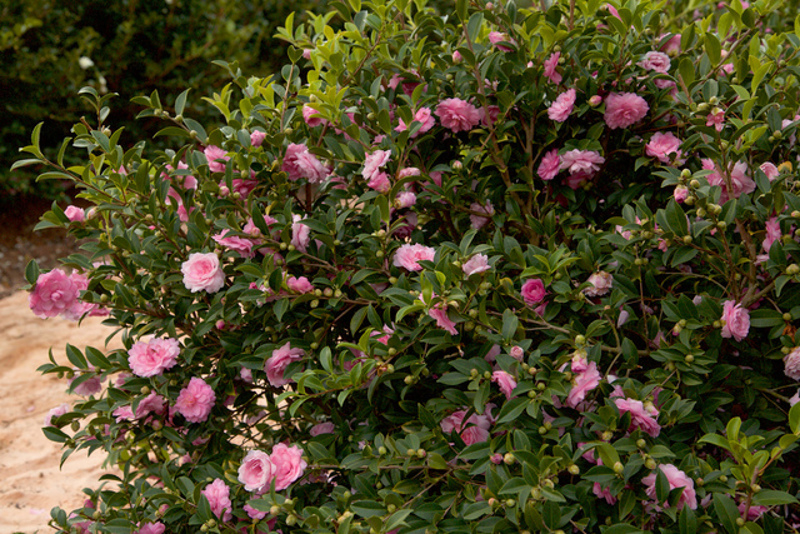Reports vary widely on how delicious deer find camellia to be. You’ll find Camellias on some deer-resistant lists, as well as on some lists of deer favorites. The middle ground answer may be that some deer avoid it, perhaps because of the caffeine rush they get (all major garden species contain caffeine) and on the other hand, since a truly famished deer will eat anything, some populations have discovered camellias are safely edible. Young plants are the most vulnerable.
Camellias that are pruned to grow as trees are harder targets. Deer are not the only ones who’ll venture a nibble or ten on your camellia – voles and squirrels can feast on them too. There are several steps you can take to protect your prized camellia at any age, however.

Keeping Deer Away from Camellia
There are several tools in your deer-proofing kit. The most effective would be a barrier such as an eight-foot fence blocking the deer’s path to the camellia. Barriers can be natural as well – consider planting a wall or block of a spiky plant like Mahonia, that is not attractive to deer.
A secondary option would be a chicken-wire wrap in gauge strong enough for cattle to protect that single plant – it may suffer some browsing around the edges but should come through. Depending on the hunger of your local population, you may be able to remove that wire wrap once the plant has a nice thick trunk and roots.
Then there are repellant methods, which range from hanging certain soaps around the plant, to sprays which tend to be more effective. The trick on the sprays is they must be reapplied vigilantly after rains.
Some reports say that the fresh growth and buds are the most tempting – squirrels can be a culprit for this, maddeningly sampling and then ditching flowers-to-be on the ground – so you may be able to spray only early in the plant’s growing season, but again, it will depend on the deer in your area and how hungry they are.
Voles will chew on the roots and trunks of camellias. If you have voles in your yard, consider adding gravel around the roots when planting. Or in the case of the Norfolk Botanic Garden, which had a lot of camellias and a lot of voles, you can plant a chicken wire cage into the ground and cover half of the trunk. VoleBloc can also be effective, but more expensive than gravel.
Will Camellias Come Back After Deer Eat Them?
If your camellia has been damaged by deer, here are some tips to help rejuvenate your plant and help it grow and flower again next year.
Using fresh, clean pruners, cut back any ravaged stems to above the next live bud or down to the next branch join.
Consider “limbing up” your camelia to a tree shape if it’s mature enough to take that pruning. This will make it harder for deer to reach. The ideal height would be with growth starting at seven or eight feet. Then, plant a ground cover of a plant they don’t like, to be an extra sign that says “nothing to see here”.
Add some compost to give your plant a gentle growth boost. If your plant is very young, consider caging it for protection while it matures.
 |
Author Erica Browne Grivas - Published 11-16-2021 |
